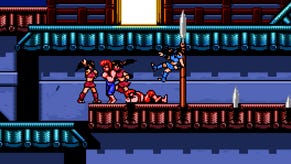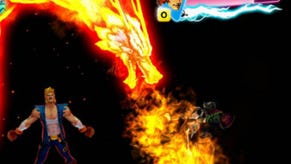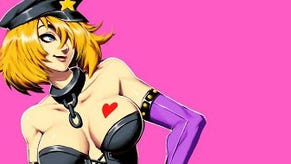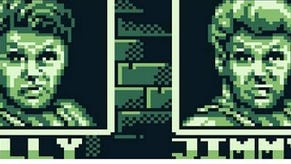A Game Design Near-Miss: Double Dragon for Game Boy
Why the classic brawler's handheld version was almost (but not quite) its best home port.
This article first appeared on USgamer, a partner publication of VG247. Some content, such as this article, has been migrated to VG247 for posterity after USgamer's closure - but it has not been edited or further vetted by the VG247 team.
I never cease to be amazed by how much I can learn from classic video games. Playing a dusty old archival release is fun, sure, but often it helps me to see the successes and failures of modern games more clearly. After all, game developers today face many of same challenges as designers of bygone eras, just in different forms.
I recently played Double Dragon on Game Boy for the first time, and it presented me with a genuine learning experience. Ive played many incarnations of Technos' classic arcade brawler through the years, from the coin-op original to the tacky-but-fun Double Dragon Neon, but somehow had never bothered with the series' first portable conversion until I stumbled through it as part of my ongoing personal journey through the Game Boy's entire library.
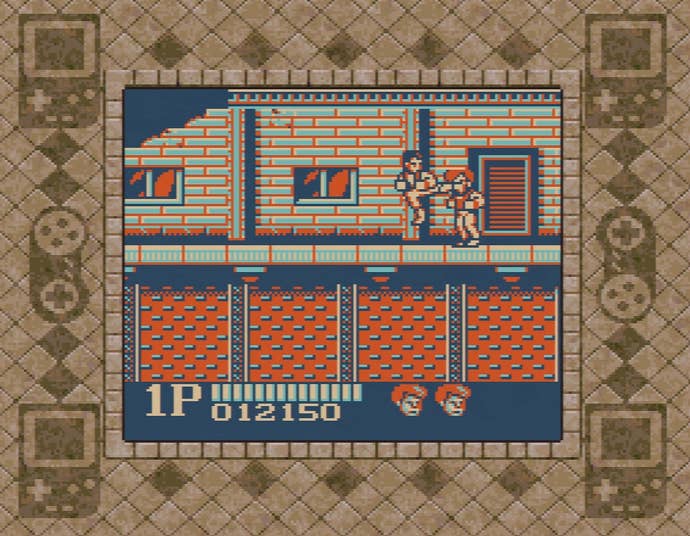
Not surprisingly, Double Dragon on Game Boy most closely resembles the NES adaptation of the game. Both Nintendo conversions had a style quite unlike any other take on the game. That may have had something to do with Nintendo's imperious edict that publishers had to create unique versions of multiplatform games for NES and Game Boy; every other system saw more-or-less direct arcade ports, while Nintendo players ended up with fundamentally similar but heavily altered renditions.
Then again, maybe the difference is that franchise creator Technos Japan seemingly developed the Nintendo renditions themselves. So perhaps they simply demonstrate the confidence of a creator iterating on its own work. Double Dragon for Nintendo consoles follows the same beats as the arcade game without feeling like an attempt to copy the coin-op slavishly the way outsourced ports did. Technos' own conversions came off as thoughtful variations on a familiar theme, like a great live band improvising on its most popular song, where other developers' works demonstrated the desperate longing for authenticity you hear from a middling cover band.
Whatever the case, arcade-to-console conversions made for tricky business back in the ’80s and ’90s. Think of the difference between a console and PC version for a modern game... except back then developers targeted the powerful arcade hardware first rather than up-converting games from consoles. When it debuted in 1987, Double Dragon ran on a board that was miles beyond the capabilities of any home console available at the time. SEGA wouldn't launch the comparable Mega Drive (Genesis) until more than a year later. Nevertheless, Technos wanted to get a hit as huge as Double Dragon on as many consoles as possible. And console owners wanted to play Double Dragon, even if their system of choice couldn't possibly have produced a decent rendition of the game. That's why we ended up with truly bewildering creations like the Atari 2600 and ZX Spectrum versions of the game — crude sketches of the arcade hit, recognizable in the abstract but hardly fun.
Nintendo's systems weren't the most underpowered machines ever to play host to Double Dragon conversions, but there was no way those systems could hope to even begin to reproduce the beefy arcade brawler. So, whether out of technical necessity or simply licensing requirements, Technos turned their Nintendo brawlers into single-player games, restricting two-person play to a fighting mode (clunky, as was the way of all pre-Street Fighter II stabs at the genre). With the NES version, they took the single-player concept to a wild extreme by adding a primitive RPG-inspired leveling mechanic to the action, unlocking the player's skills progressively based on the experience they earned by brawling. It was, one assumes, both a reaction to Japanese gamers' newfound collective obsession with Dragon Quest and also an attempt to keep players from cheesing their way through the entire game with the elbow smash, as they could in the arcade. (Plus, can you imagine if someone had published a Famicom game with "Dragon" in the title in Japan in 1988 but didn't include any RPG elements? There'd have been blood in the streets.)
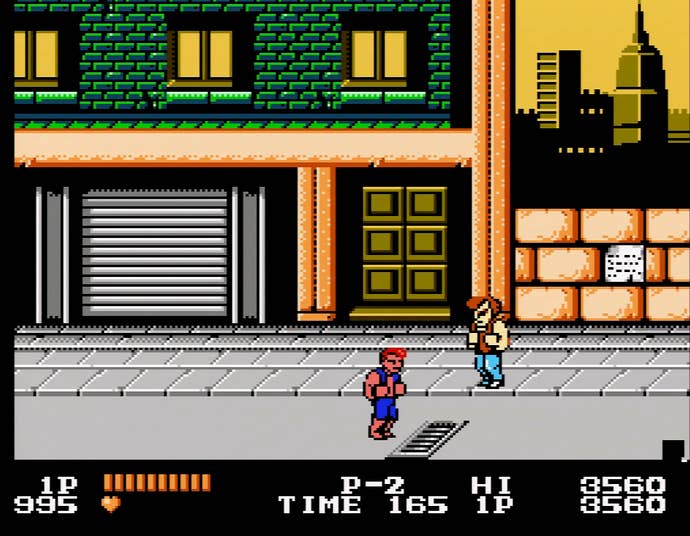
The Game Boy version hit rewind on some of the NES changes, dropping the RPG elements and allowing you to make use of Billy Lee's full array of moves right from the very outset. Still, it also expanded on many NES-exclusive elements, such as the 2D sequences and platforming. Double Dragon's big innovation in the arcade was the addition of a forced three-quarters perspective that broke brawling from the strictly linear belt-scroller popularized by Irem's Kung-Fu; entire portions of the NES and Game Boy adaptations cast aside that design innovation for pure side-scrolling that denied players the ability to move within a plane and break line-of-sight (and line-of-punches) with foes. These portions tended to involve lots of ladders and moving platforms, though, so they still represented an evolutionary step over older, simpler belt-scrollers.
However, Double Dragon on Game Boy dropped one other element of the NES game, and this one modification rendered the handheld port... well, not unplayable, but certainly almost entirely unwinnable. Namely, it dropped the NES game's checkpoints.
In its arcade incarnation, Double Dragon was built around cooperative play and a desire for players to spend lots of quarters. As a result, the coin-op tended to bury players beneath cheap, aggressive foes that would burn through their stock of lives in a hurry... then let them pick up right where they left off for the low, low price of 25¢. Sure, you could beat the game in a single go... but it would probably cost four or five bucks to do so. The NES version, of course, couldn't tie progress to coin drops, so Technos removed continues and rebalanced the game to be extremely difficult but not totally impossible to complete on three lives. And when you ran out of health, you'd only be set back to the beginning of the current enemy encounter; not only that, but you'd have a chance to take on a tough foe refreshed, with topped-up stamina for Billy.
But something happened between Double Dragon's NES debut in 1988 and its arrival on Game Boy two years later: The rise of the game rental market. Video shops jumped on Nintendomania in a big way and opened massive NES rental sections; Japan's government put the kibosh on game rentals, but the U.S. ruled in favor of allowing game rentals. Suddenly publishers found their sales impacted by this new market as kids would forego buying in favor of renting. Who would want to spend $40 on a six-level action game they could finish over the course of a weekend for a few bucks?
As game rentals grew in popularity across America, developers responded by making their products much, much harder to complete, sometimes changing the U.S. version to be crushingly difficult. We went from Mega Man 2, which added a vastly easier baseline difficulty option for the U.S., to Ninja Gaiden III, which made all enemies deadlier in the U.S. while dropping the Japanese edition's infinite continues down to a mere five credits.
I don't know that Double Dragon on Game Boy was influenced by this trend, but it certainly seems that way. It plays a great deal like the NES port of the game, yet dropping the console release's mid-stage checkpoint system changes the experience to become truly taxing. When Billy Lee falls in combat, he's flung back all the way to the beginning of a level section. Lose to the last of 25 consecutive opponents? Tough luck! Back to bad guy #1 for you.
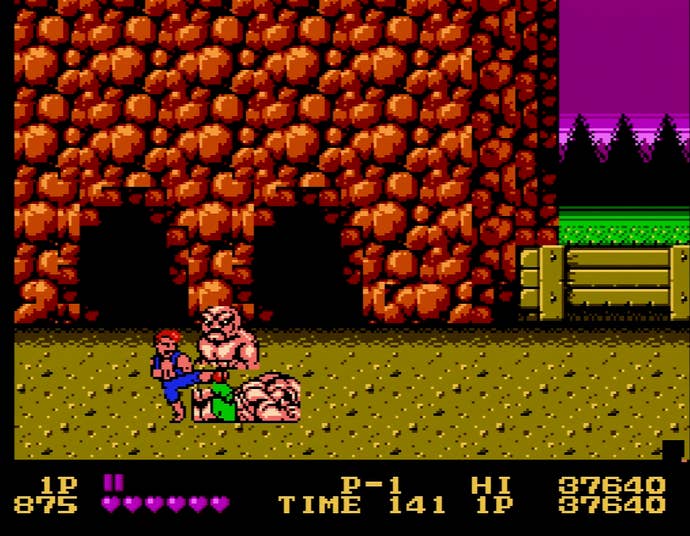
At the same time, Technos reworked the game's levels to feature lengthier consecutive encounters. Consider Mission Three (which is as far as I've been able to make it without cheating): On NES, the third mission has plenty of tough encounters, but it's broken into four smaller sections. On Game Boy, the third mission covers about the same amount of ground, but it plays out in only two sections, offering fewer of the mid-level scene breaks that serve as the handheld port's only checkpoints. In order to advance, you need to play through each of these lengthy sections from start to finish — an incredible ordeal. With patience, practice, and luck, it's surely not an impossible task... but the Game Boy rendition stacks the odds against you to an unreasonable degree.
We saw lots of borderline-impossible 8-bit games in the early and mid ’80s, but by 1990 developers had begun to recognize the fact that fairness has to come into play at some point. Plus, they had gotten a handle on development processes in general. Game Boy Double Dragon doesn't have the difficulty of, say, a first-wave licensed NES game, rendered unfair through the technical and design deficiencies of inexperienced developers. Technos knew their stuff, and Double Dragon was visually and technically one of the most impressive releases of the early Game Boy era. Rather, the game's exhausting, no-mercy design comes off as a deliberate decision to extend play time by turning victory into an onerous chore.
It's interesting to see how such a simple creative choice can shape the arc of a game experience. My initial thoughts on playing Double Dragon's Game Boy rendition were entirely positive: It looks great, it sound great, it moves smoothly, and it plays well. Not only that, but it abandons the needless experience system of the NES game, making it more fun to pick up and play. From my initial impressions, I expected a top-class conversion from start to finish. However, the further I made it into that dreadful third mission before dying, the more misgivings I experienced. Every time I felt as though I'd reached a crucial milestone, I'd scroll ahead to yet another harsh encounter to survive. With each failure, I'd be flung back to the beginning of the stage; with no continue system in place, enough deaths would send me back to the start of the game where I'd be forced to slog once again through the straightforward early levels by rote repetition. Ultimately, the biggest thought I took away from this adaptation was that it had no respect for my time — quite a change from my initial positivity.
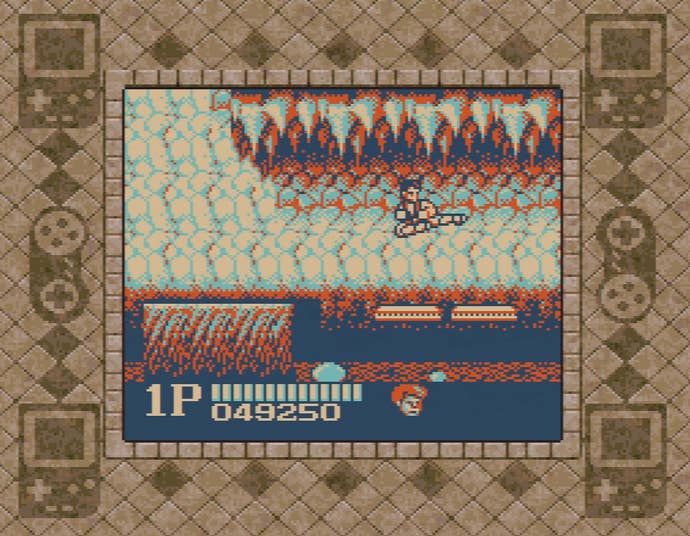
More than 25 years later, the difficult question of difficulty continues to be something developers wrestle with. How do you balance a game to be manageable and fair without defanging it altogether? Most developers err toward the "defanging" side in order to avoid alienating players; the frustration I felt towards this Double Dragon port arrives a lot more readily for more casual players, and it will drive them away from other games just the same as Double Dragon repulsed me. Meanwhile, games that err in the other direction will usually find only a small fanbase that relishes the challenge of mastering a seemingly impossible task, if only for the bragging rights. But walking the line in between? That's rare. There's a reason Dark Souls fans won't shut up about the series: It's cruel and difficult, yes, but it almost always gives players the information and tools they need in order to survive.
As games have spread into the mainstream, they've reached a much wider audience than in the 8-bit days. As such, there's probably no one "correct" approach to difficulty — what entices hardcore fans will alienate novices, and a game that welcomes the inexperienced will likely more veterans. Even Nintendo struggles with this balance: Modern Mario games hand out so many 1UPs they become pointless for experienced fans. Yet 1UP rationing also serves as a major stumbling block for casual players, who in many games will run out of lives and lose several stages' worth of progress, possibly giving up as a result. So no, maybe there's no single universal answer for the question of how to tune a game's balance. But there are certainly wrong answers, and Double Dragon on Game Boy definitely is one example. It's a pity — they came so close to getting it right with this one.


